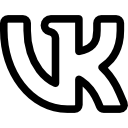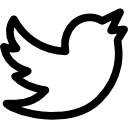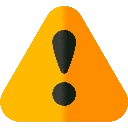. Association of periOperative Registered Nurses b. American College of Surgeons c. Association of Surgical Technologists d. Accreditation Review Committee on Education in Surgical Technology ANS: C The AST is the professional organization in surgical technology. The association supports students and graduate surgical technologists through its many services and publications. DIF: 1 REF: p. 5 2. ________ demonstrates that a surgical technologist from an accredited program has achieved a minimum level of knowledge and skills. a. Licensure b. An associate’s degree c. Graduation d. Certification ANS: D Certification: Acknowledgment by a private agency that a person has achieved a stated level of knowledge and skill. Certification is usually established by graduation from an accredited institution and passing a written examination. DIF: 1 REF: p. 1 3. Certification for the surgical technologist is ________. a. mandatory b. voluntary c. unnecessary d. invalid ANS: B Important to know: Students who graduate from an accredited program are required to take the certification exam as a means of maintaining the school’s accreditation status. DIF: 1 REF: p. 4 4. The profession of surgical technologist is defined today as a result of ____________. a. less demanding professional needs b. technological advances c. growing demands in the ancillary departments d. advances in digital technology ANS: B Technological advances created a need for more trained personnel who could assist the surgeon. DIF: 1 REF: p. 2 5. The need for assistive personnel in surgery did not arise until ____________. a. World War I b. Korean War c. Civil War d. World War II ANS: D The need for other types of surgical assistants became critical during World War II. During World War I, Army corpsmen worked on the battlefield to offer aid and comfort to the wound-ed, but they had no role in surgery. World War II dramatically changed that. The need for assistive personnel in surgery did not arise until World War II. DIF: 1 REF: p. 2 6. During World War I, _______ worked on the battlefield to offer aid and comfort to the wounded. a. nurses b. assistants c. Corpsmen d. orderlies ANS: C During World War I, Army corpsmen worked on the battlefield to offer aid and comfort to the wound-ed, but they had no role in surgery. DIF: 1 REF: p. 2 1 7. A new profession was born in the Army for the Corpsman; it was named __________. a. Corpsman I b. nurse c. CST d. ORT ANS: D When nurses were not available, such as on combat ships, corpsmen worked under the direct supervision of the surgeons. The Army referred to these corpsmen as operating room technicians (ORTs). Thereafter, the military played a significant role in defining the role of the ORT. Each branch of the military provided specific training for the ORT. DIF: 1 REF: p. 2 8. Registered nurses continued to fill the role of the scrub, or “instrument,” nurse until about __________. a. 1970 b. 1965 c. 1966 d. none are correct ANS: B Registered nurses continued to fill the role of “instrument nurse” until about 1965, when the role changed to “circulating” or non-sterile nurse. DIF: 1 REF: p. 2 9. The Association of periOperative Registered Nurses (AORN) published a book called _______________. a. The Role of the Operating Room Technician b. Teaching in the Operating Room c. Teaching the Operating Room Technician d. Surgical Techniques for Operating Room Technician ANS: C In 1967, prompted by the need for guidelines and standards in the training of paramedical surgical personnel, the Association of Operating Room Nurses (AORN) published a training manual called Teaching the Operating Room Technician. DIF: 1 REF: p. 2 10. In _______ the AORN board of directors created the ________________. a. 1968, Association of Operating Room Technicians b. 1965, Association of Operating Room Technicians c. 1968, Association of Operating Room Nurses d. 1967, Association of Operating Room Nurses ANS: C In 1968 the AORN board of directors created the Association of Operating Room Technicians (AORT), which led to formal training for the civilian ORT in proprietary schools across the United States. DIF: 1 REF: p. 2 11. AORT stands for __________. a. Association of Operating Radiology Technician b. Association of Ophthalmic Register Technician c. Association of Operating Respiratory Technician d. Association of Operating Room Technicians ANS: D AORT stands for Association of Operating Room Technicians. DIF: 1 REF: p. 2 12. In an effort to formalize technologists’ education, AORT created two new committees, which are the Joint Review Committee and the __________. a. AST b. LCC-ST c. CST d. CORT-ST ANS: B The AORT created two new committees, the Liaison Council on Certification for the Surgical Technologist (LCC-ST) and the Joint Review Committee on Education. DIF: 1 REF: p. 2 13. The surgical technologist’s professional organization that supports students and graduates is __________. a. LCC b. CST c. AST d. NBSTSA ANS: C The AST is the professional organization in surgical technology. The association supports students and graduate surgical technologists through its many services and publications. DIF: 1 REF: p. 5 . 2 14. At the national level, AST provides the following support to students and graduates of surgical technologist and teaching institutions and the public __________. a. maintains practice standards, code of ethics, and code of conduct for the surgical technologist b. publishes a professional journal, The Surgical Technologist c. holds annual conferences for surgical technologists and educators d. all are correct ANS: D State assemblies, local chapters of AST, link surgical technologists to their national association and provide forums for learning, discussion, and advocacy. The association is actively involved in training and curriculum development. At the national level, AST supports student and graduate surgical technologists, the public, and teaching institutions. DIF: 1 REF: p. 5 15. It is important for students to become active members of AST to promote __________. a. standards of the profession b. the Association of Surgical Technology c. the Accrediting Review Council on Education in Surgical Technology d. themselves ANS: A It is important for surgical technology students to become active members of AST and to promote the standards of the profession DIF: 1 REF: p. 5 16. As a body of professionals, surgical technologists are supported by a number of key organizations and partners. Each has a designated role in __________. a. certification, standards, continuing education, and promotion b. continuing education, promotion, standards, and accreditation c. standards, continuing education, accreditation, and promotion d. promotion, certification, accreditation, and continuing education ANS: D As a body of professionals, surgical technologists are supported by a number of key organizations. Each has a designated role in promotion, certification, accreditation, and continuing education. DIF: 1 REF: p. 5 17. Which of the following organizations oversees certification and credentialing for the surgical technologist? a. AORN b. AST c. NBSTSA d. CAAHEP ANS: C The National Board of Surgical Technology and Surgical Assisting (NBSTSA) which provides credentialing services for surgical technology provides a Candidate Handbook for students. DIF: 1 REF: p. 4 18. Surgical technologists are trained in __________. a. 2-year colleges b. military c. proprietary certificate programs d. all the above ANS: D Surgical technologists may be trained in a short certificate programs (9 to 12 months), or a 2-year associate degree course. DIF: 1 REF: p. 4 19. Certification demonstrates __________. a. a level of knowledge and skill b. advanced level competencies c. understanding of the principles and practices of surgery d. support for NBSTSA ANS: A Certification: Acknowledgment by a private agency that a person has achieved a stated level of knowledge and skill. DIF: 1 REF: p. 1 . 3 20. To be eligible to take the certification examination, the applicant must meet all requirements EXCEPT __________. a. be a graduate of an accredited program (ABHES and CAAHEP) b. currently be a CST c. be a graduate of a military program d. have 7 of the last 10 years documented scrub experience ANS: D The National Board of Surgical Technology and Surgical Assisting (NBSTSA) which provides credentialing services for surgical technology provides a Candidate Handbook for students. The handbook covers eligibility to take the certification exam and other topics important to the process. The Handbook can be accessed at DIF: 1 REF: p. 4 21. Suzie has taken the CST examination and passed. For Suzie to keep her certification without retaking the examination, she must do one of the following __________. a. attend the national conference b. maintain continuing education (CE) credits c. nothing d. attend all state meetings ANS: B In order to maintain certification, practicing STs must earn continuing education credits. DIF: 1 REF: p. 4 22. The nonsterile member of the surgical team is called __________. a. Assistant b. Scrub c. circulator d. Surgeon ANS: C the circulator is a “nonsterile” team member who is responsible for many different tasks, including direct patient care. DIF: 1 REF: p. 3 23. The surgical technologist who works in a hospital or other facility that provides 24-hour care is usually required to __________. a. take a break every hour b. be on “call” c. do nothing d. none are correct ANS: B The surgical technologist working in a hospital or other facility that provides 24-hour care is usually required to be on “call.” DIF: 1 REF: p. 3 24. ___________ has particular attributes, attitude, and behavior that reflect a high standard of accountability, ethics, honesty, and respect for people. a. Someone highly trained b. Someone who uses his or her skills c. Allied health professional d. Surgical technologist ANS: C Allied health professionals contribute to the well-being and health of the patient through technical expertise and patient care in line with the standards, guidelines and ethics of their profession. DIF: 1 REF: p. 1 MATCHING Match each item with the correct acronym. a. NBSTSA b. ABHES c. ARC/STSA d. CAAHEP e. AORN f. AST g. ORT h. CFA i. CST j. STCR 1. Surgical Technologist Circulating Role 2. Operating Room Technician 3. National Board of Surgical Technology and Surgical Assisting 4. Association of Operative Registered Nurses 5. Accrediting Bureau of Health Education Schools 6. Association of Surgical Technologists 7. Commission on Accreditation of Allied Health Education Programs 4 8. Certified surgical technologist 9. Accreditation Review Council on Education in Surgical Technology and Surgical Assisting 10. Certified first assistant 1. ANS: J DIF: 2 REF: p. 3 2. ANS: G DIF: 2 REF: p. 2 3. ANS: A DIF: 2 REF: p. 4 4. ANS: E DIF: 2 REF: p. 2 5. ANS: B DIF: 2 REF: p. 6 6. ANS: F DIF: 2 REF: p. 5 7. ANS: D DIF: 2 REF: p. 6 8. ANS: I DIF: 2 REF: p. 3 9. ANS: C DIF: 2 REF: p. 6 10. ANS: H DIF: 2 REF: p. 6 Match the definition with the role of the surgical technologist. a. Scrub role b. Circulator c. Second assistant d. Preceptor e. Leadership and management 11. Maintain retraction of tissue 12. Communicate effectively with surgeon to prevent errors, such as passing the wrong instrument or passing it in the wrong position 13. Nonsterile team member who assists the RN 14. Teaching others while scrubbed 15. Pursue an advanced degree in hospital administration and management 11. ANS: C DIF: 2 REF: p. 3 12. ANS: A DIF: 2 REF: p. 2 13. ANS: B DIF: 2 REF: p. 3 14. ANS: D DIF: 2 REF: p. 3 15. ANS: E DIF: 2 REF: p. 3 Match the definition with the role of the surgical technologist. a. Scrub role b. Circulator c. Second assistant d. Central Sterile Processing specialist 16. Assist with hemostasis as directed by the surgeon 17. the preparation and care of medical instruments and equipment 18. Ensure patient chart, including results of diagnostic procedures, permits, and preoperative checklist, accompanies the patient into surgery 19. Prepares instruments and supplies on the sterile field 16. ANS: C DIF: 2 REF: p. 3 17. ANS: D DIF: 2 REF: p. 7 18. ANS: B DIF: 2 REF: p. 3 19. ANS: A DIF: 2 REF: p. 3 Match the definition with the role of the surgical technologist. a. Scrub role b. Circulator c. Second assistant d. Central Sterile Processing specialist 20. Irrigating the surgical wound, especially in microsurgery 21. Skills and knowledge required for this role are the processes of sterilization and disinfection and sterilization processes, assembly of surgical instrument sets, and management of complex instrument systems. 22. Role is fulfilled by a registered nurse 23. Assist surgeon in specific, well-defined task as needed during the procedure 20. ANS: C DIF: 2 REF: p. 3 21. ANS: D DIF: 2 REF: p. 7 22. ANS: B DIF: 2 REF: p. 3 23. ANS: A DIF: 2 REF: p. 2 Match the definition with the role of the surgical technologist. a. Circulator b. Second assistant c. Preceptor d. Leadership and management 24. Maintain a “dry” surgical site by operating suction devices and appropriate use of surgical sponge 25. A teacher 26. The nonsterile person who performs patient care procedures, obtains and delivers the equipment needed for a surgery case, opens sterile supplies, and assists in positioning the patient on the operating table 27. Facilitate and coordinate teams and to manage equipment . 5 25. ANS: C DIF: 2 REF: p. 3 26. ANS: A DIF: 2 REF: p. 3 27. ANS: D DIF: 2 REF: p. 3 Match the following definitions with the correct term. a. Military service b. Specialty practice c. CST-CFA d. Educator and clinical instructor e. Medical industry representative f. Materials management or central sterile processing 28. Implements the curriculum for the institution and manages departments 29. Assists in surgical procedures to retract tissue and aid in exposure, hemostasis, close tissue planes, and other intraoperative techniques while under supervision of the surgeon 30. Education program parallels civilian requirements, with additional training in combat and war surgery and in golden hour treatment 31. The scope of duties and responsibilities includes disinfection and sterilization processes, assembly of surgical instrument sets, and management of complex instrument systems 32. Promote the company’s equipment but also has the technical expertise to troubleshoot problems 33. The hospital-based surgical technologist may specialize in one or more surgical specialties such as orthopedics, neurosurgery, cardiac surgery, obstetrics, or plastic surgery 28. ANS: D DIF: 2 REF: p. 6 29. ANS: C DIF: 2 REF: p. 6 30. ANS: A DIF: 2 REF: p. 5 31. ANS: F DIF: 2 REF: p. 7 32. ANS: E DIF: 2 REF: p. 7 33. ANS: B DIF: 2 REF: p. 7 6 Chapter 2: Communication and Teamwork MULTIPLE CHOICE 1. ____________ and ___________ are two of the most important components of patient care. A. Teamwork and professionalism C. Communication and teamwork B. Communication and professionalism D. Teamwork and skills ANS: C Communication and teamwork are two of the most important components of patient care. PTS: 1 DIF: 1 REF: p. 14 2. Surgery is performed by _______________. A. surgeons C. surgical technologists B. nurses D. teams of health professionals ANS: D Surgery is performed by teams of health professionals. PTS: 1 DIF: 1 REF: p. 14 3. ________ is a quality found in people with self-esteem. This type of behavior seeks to protect one’s own rights while respecting those of others. A. Aggressiveness C. Assertiveness B. Offensiveness D. Emotion ANS: C Assertiveness is defined as a quality in people with self-esteem; assertive behavior seeks to protect one’s own rights while respecting those of others. PTS: 1 DIF: 1 REF: p. 18 4. ________ are behaviors that are accepted as part of the environment and culture of a group. A. Norms C. Regulations B. Laws D. Rules ANS: A Norms are defined as behaviors that are accepted as part of the environment and culture of a group. Norms are usually established by custom and popular acceptance rather than by law, although the two may not be mutually exclusive. PTS: 1 DIF: 1 REF: p. 17 5. Communication is a two-way process between the ________. A. ST and patient C. surgeon and circulator B. sender and receiver D. accuser and accused ANS: B Communication is a two-way process in which one person (the sender) expresses ideas and feelings and another (the receiver) receives them, processes them, and gives feedback. PTS: 1 DIF: 1 REF: p. 14 6. ________ is the expression of emotion or opinion contained in the delivery of a message. A. Expression C. Sensitivity B. Body language D. Tone ANS: D Tone is the environment of the message. It reflects the sender’s emotions, such as respect for the receiver, opinion about the message, or attitude toward the receiver. PTS: 1 DIF: 1 REF: p. 15 7. ________ is the response to a message and is a component of effective communication. A. Feedback C. Harassment B. Aggression D. Abuse ANS: A Feedback is a response by the receiver that acknowledges the message that was sent. PTS: 1 DIF: 1 REF: p. 14 8. The most important reason to increase ________ is to maintain respect, trust, and empathy among coworkers and management. A. staff C. communication skills B. salaries D. gossip and rumors ANS: C Among the most important reasons to improve communication skills is to maintain respect, trust, and empathy among coworkers and management. The operating room environment is often rushed, tense, and even brusque. PTS: 1 DIF: 1 REF: p. 14 9. ________ is/are the substance or actual information contained in a message. A. Values C. Tone B. Response D. Content ANS: D Content is defined as the substance or actual information contained in a message. PTS: 1 DIF: 1 REF: pp. 14-15 10. Poor patient care, errors, conflict, and stress are results of ________. A. poor communication skills C. lack of educated team members B. aggression D. cultural differences ANS: A Good communication greatly increases the safety of the environment for the patient. Poor communication results in poor patient care, errors, conflict, and stress. PTS: 1 DIF: 1 REF: p. 14 11. Many health care workers are surprised to find that the greatest challenge in their work is not the work itself but the ________ of the workplace. A. stress C. gender value B. acceptable social distance D. interactions and social climate ANS: D Even under the best circumstances, communication can be difficult. Many health care workers are surprised to find that the greatest challenge in their work is not the work itself but the interactions and social climate of the workplace. PTS: 1 DIF: 1 REF: p. 14 12. Even if the sender does not wish to express his or her true feelings about the message, these feelings will probably be conveyed by ________. A. aggressive behavior C. body language B. assertiveness D. gossip or rumors ANS: C The way we use posture, gestures, and expressions to convey ideas and messages is called body language. These cues can emphasize the message or convey a meaning that differs significantly from what was originally intended. PTS: 1 DIF: 1 REF: p. 15 13. ________ can be both an expression of comfort and a way of controlling people. A. Harassment C. Values B. Touch D. Interactions ANS: B Touch can be both an expression of comfort and a way of controlling people. Touch, except in social gestures such as hand-shaking, is almost never neutral. PTS: 1 DIF: 1 REF: pp. 15-16 14. Good communication clarifies relationships and helps establish professional and social boundaries. It increases teamwork and goals, which will greatly increase the safety of the environment for the ________. A. surgeon C. ancillary departments B. management staff D. patient
No review has been posted for this item yet
 Cookies!
Cookies!









